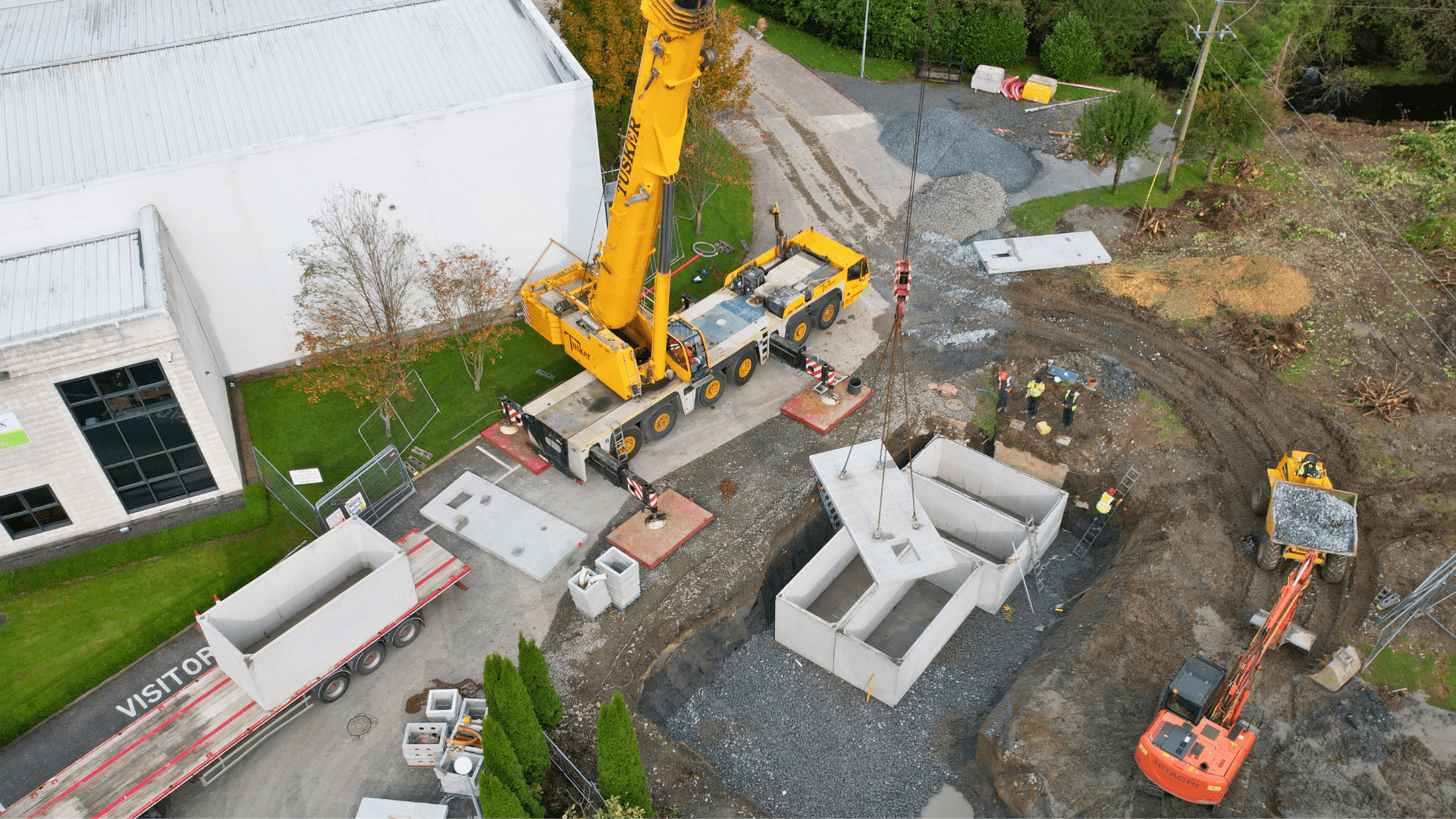Warden’s filter media installed in MBBR plant upgrade in Ireland
The Nest Box Egg Company, based in Castleblaney, Co Monaghan, Ireland, distributes over three million eggs each week. It provides free-range, Organic, and Enriched Colony eggs sourced from 26 Irish family-run farms. The facility operates under European food hygiene regulations, the Bord Bia Sustainable Egg Assurance Scheme, and the BRCGS Food Safety Standard.
Previously, wastewater was treated in a small package treatment plant. But the site outgrew the plant, and expansion was required. O’Reilly Oakstown was selected to supply the new WWTP, and Montgomery EHS (MEHS) was chosen as the design consultant.
The project
The plant needed to handle egg wastewater with high levels of COD, nitrogen, and recalcitrant carbon compounds, as well as significant fluctuations in the composition of the wastewater (e.g. organic load) due to batch operation. There was also potential for dramatic changes in the pH of the raw wastewater and the presence of strong cleaning agents required to maintain high-quality standards in the processing facility.
Additional requirements meant the new plant needed to be as small as possible while allowing for future expansion, have high energy efficiency, and include a disposal method (to protect local surface waters from nutrient loading). The selected design was a Moving Bed Biofilm Reactor (MBBR) system to treat the wastewater, with a Precision Effluent Disposal System (PEDS) (a subsurface Irrigation system) for effluent disposal.
The challenge
Treatment of wastewater from food and drink facilities is challenging. It often contains high COD and nitrogen concentrations, recalcitrant carbon compounds, and is not easily biodegradable. The wastewater can also contain increased levels of biological inhibiting compounds, such as detergents from cleaning products, which can cause further complications.
For traditional activated sludge systems, this means issues with toxic shock and lack of ability to handle sudden changes in organic load or flow rates. The result is incomplete wastewater treatment and potential failure to meet effluent consents, which can put people and the environment at risk. Alternatively, MBBR technology can handle influent fluctuations, and high organic loads, and has excellent resistance to shock-loading, making it ideal for wastewater treatment.
MBBR technology
At the heart of the MBBR system are free-floating plastic biomass carriers – called bio media, which provide a surface area for biomass to attach. These helpful bacteria and microorganisms break down organic compounds present in the wastewater.
For the project, Warden Biomedia’s Bioflo+ filter media was selected. Bioflo+, with internal fins, gives a large, protected surface area of 800m²/m³, the highest in its class, giving enhanced nitrification and denitrification in a minimum plant footprint.
With a specific gravity of 0.96, the media has the buoyancy needed for the MBBR process, and a large open structure allows wastewater to move freely through the media, helping to maintain a healthy and thin biofilm over the fully protected surface area.
Plant design
The new MBBR consists of two reactors working in series. Each reactor with a 30% carrier fill ratio. The design allows the media volume to be increased to 60% doubling the capacity of the system. A nitrate recycling system operates by recycling effluent from the clarifier back to the anoxic tank where the nitrate is reduced to nitrogen gas.
To provide a level of security against fluctuations in the pH of the influent, the wastewater is screened and pH monitored before entering the equalisation tank. Two emergency tanks were installed, and in the event of extreme pH values, wastewater can be diverted into these tanks to avoid extreme pH downstream – this helps protect and maintain biofilm integrity within the MBBR tanks.
Nutrient mitigation
The Nest Box site is adjacent to Gentle Owen’s Lake. To protect the lake and other surrounding waterways, a PEDS was installed. Effluent is dispersed from flow emitters evenly spaced along a flexible dripline buried between 200-500mm below the ground, which distributes effluent slowly and uniformly over a large surface area.
The effect of surface irrigation characteristics, such as crusting, saturated conditions of ponding water, and potential surface runoff (including soil erosion), are eliminated. Sub-surface irrigation is a more sustainable alternative to direct discharge to surface water and reduces the risk of nutrient loading in local at-risk watercourses.
Project success
The plant was commissioned in October 2023 and, the media was seeded using a bacterial culture, by the time the primary settlement tank where full, the biofilm was acclimated and producing treated effluent well below the specified COD of 100mg/l, reaching consistent COD removal levels of around 99%.






